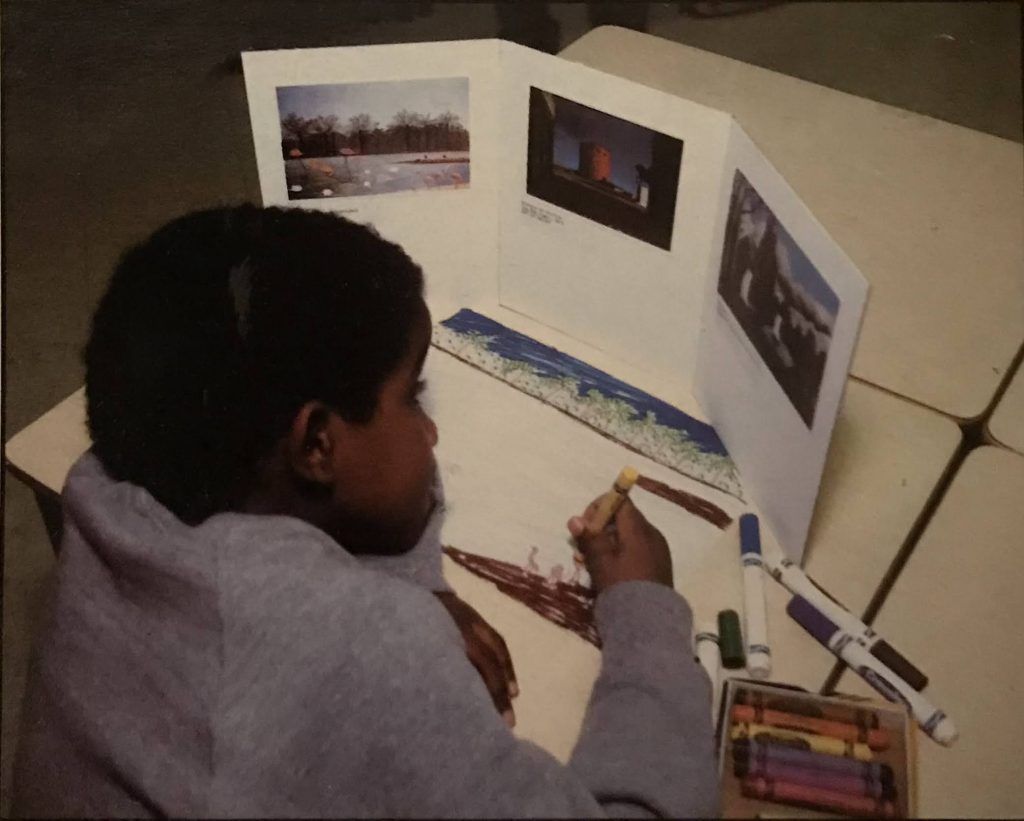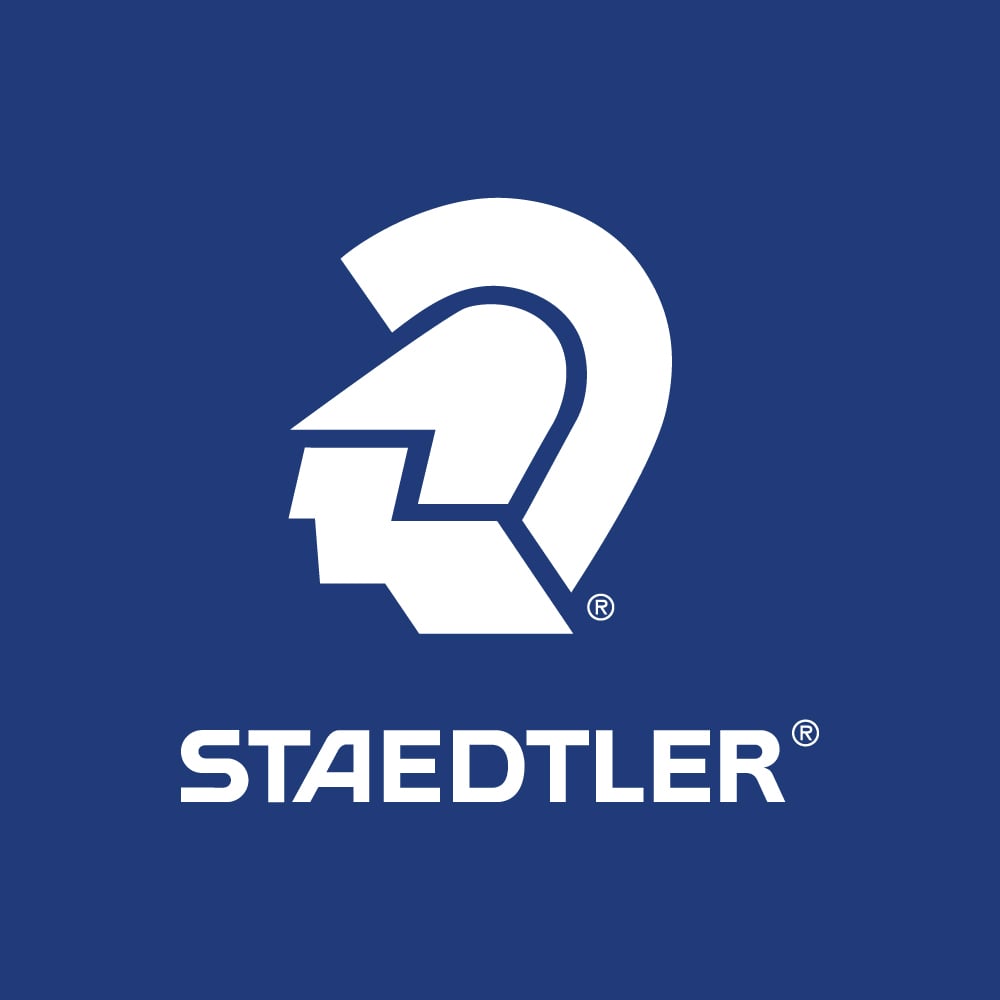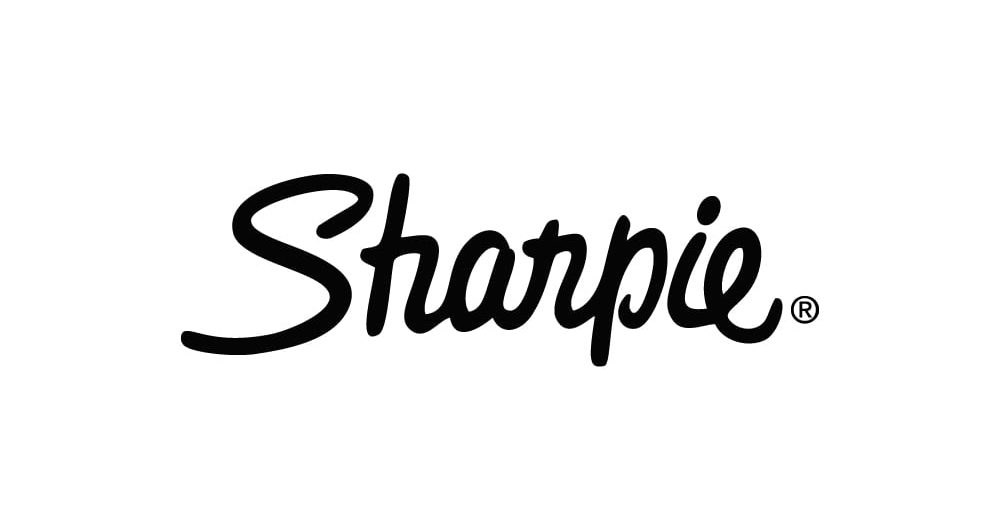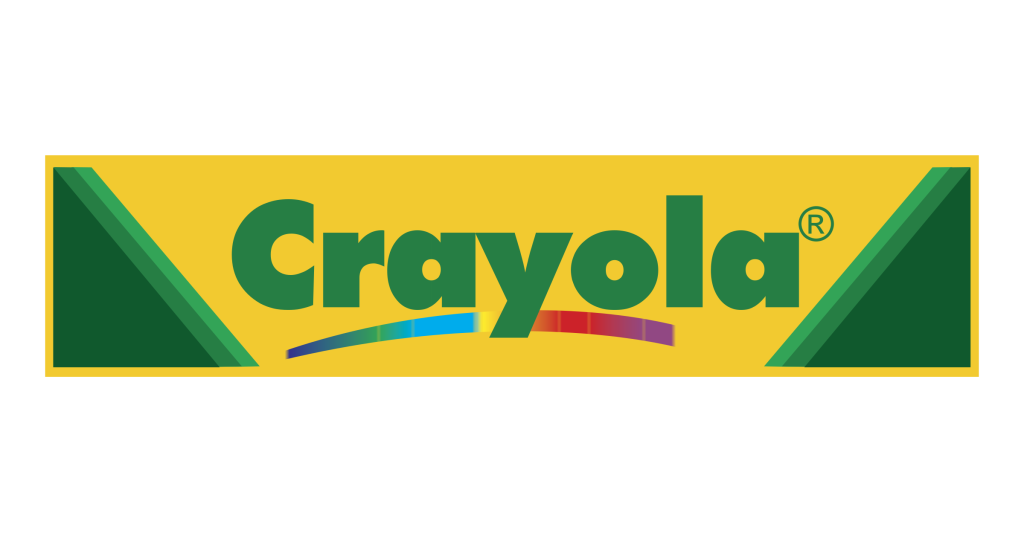
Sketch Ideas for Beginners: Unlock Your Artistic Potential
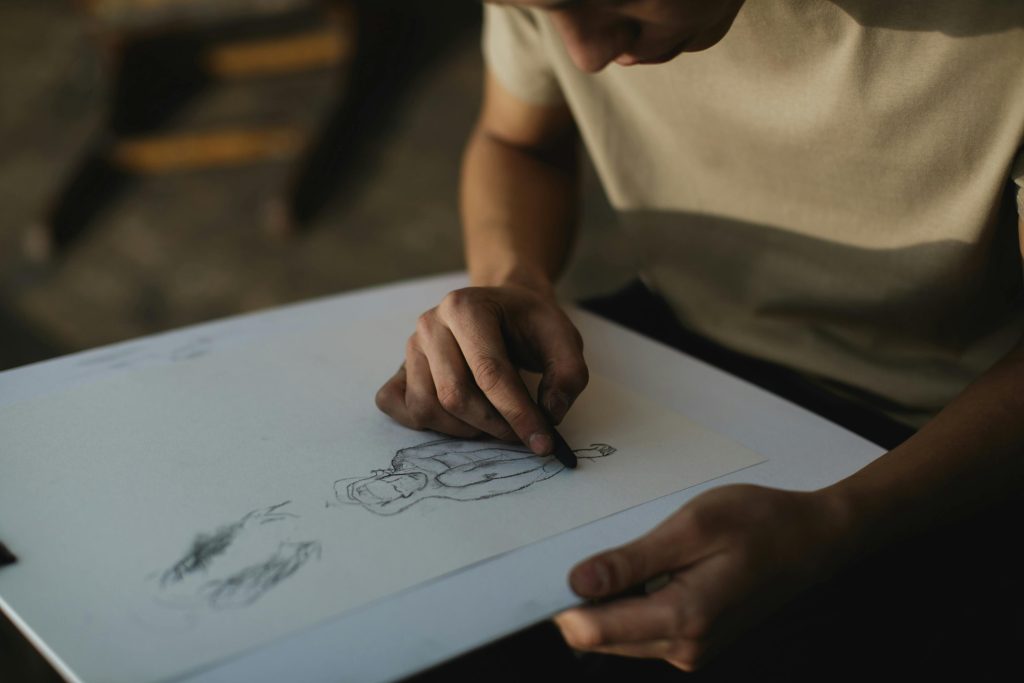
Introduction
Why Sketching is a Powerful Tool
Have you ever felt the urge to doodle during a boring meeting or class? Looking for ideas on what to sketch? Or perhaps you’ve found yourself lost in the act of sketching, time slipping away unnoticed? If so, you’re not alone. It’s an urge I’ve had since I was a kid. Many people believe they can discover and sketch easy things to draw. However, sketching is much more than a simple pastime. As you learn various sketch ideas for beginners in this article, you’ll discover a new dimension of art. Plus, you’ll learn how to improve your life through the daily practice of drawing.
Stress Relief and Mindfulness
In our fast-paced, digitally saturated world, stress is a constant obstacle. But what if there was a simple, effective way to unwind and recharge? Learning sketch ideas for beginners can be a powerful antidote to stress. As you sketch on the lines and shapes on the page, your mind enters a state of escapism. In fact, you achieve a mental state of complete absorption in the activity of drawing. This meditative state can help you to quiet your thoughts, reduce anxiety, and promote a sense of calm.
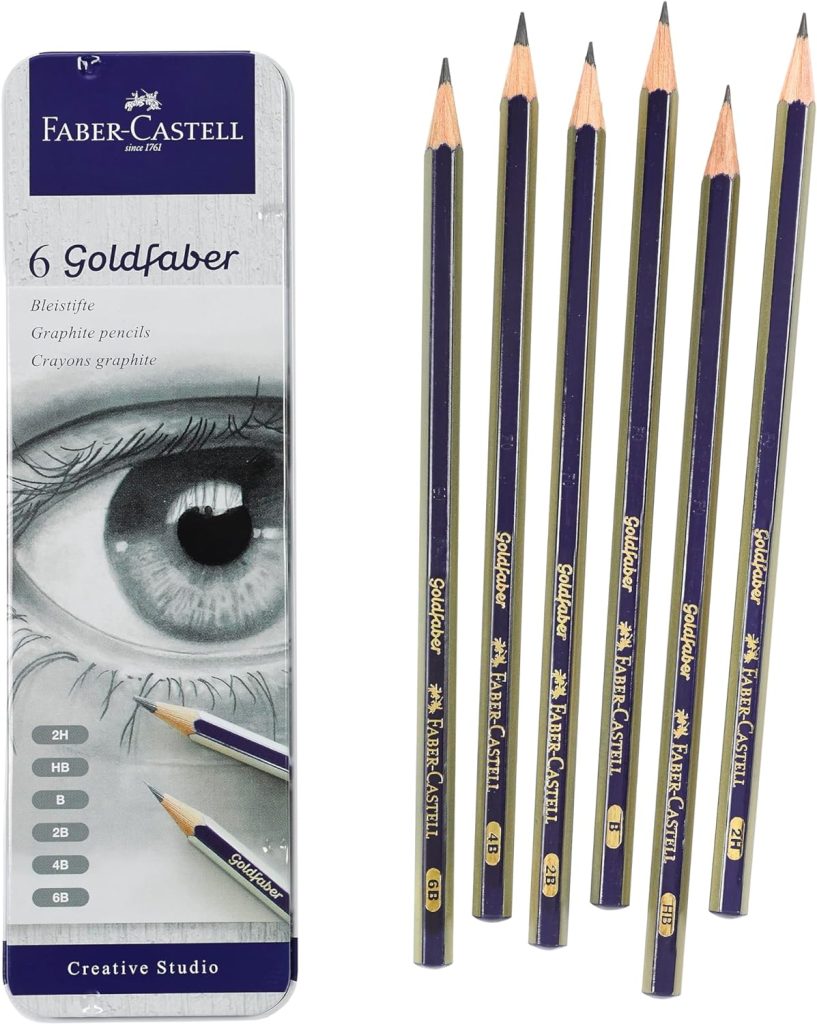
Available here at Amazon: Faber-Castell Graphite Sketch Pencil Set – 6 Graphite Pencils (2H, HB, B, 2B, 4B, 6B)
Getting Started: Essential Supplies
Before embarking on your artistic journey using sketch ideas for beginners, it’s essential to gather the right tools. Whether you’re interested in sketching in charcoal or are among the beginners sketching with pencil, keep in mind there’s no need for a plethora of supplies to start sketching. Just the basic minimal drawing tools are enough to make some magic. At the end of the day, your brain is the most powerful tool of all.
Erasers: A high-quality eraser is essential for correcting mistakes and refining your sketches. A kneaded eraser is particularly useful for blending and smudging, while a vinyl eraser is great for precise erasing.
Sketchbook or Drawing Paper: A sketchbook is a convenient way to store your sketches and track your progress. Opt for a sketchbook with sturdy binding and acid-free paper to preserve your artwork. Alternatively, you can use loose sheets of drawing paper, which come in various sizes and weights.
Optional Supplies: While not strictly necessary, these additional supplies can expand your creative possibilities:
Charcoal Pencils: These pencils produce rich, dark lines and are ideal for creating dramatic effects.
Colored Pencils: These pencils allow you to add color and vibrancy to your sketches.
Markers: Markers are a versatile tool for creating bold lines and flat colors.
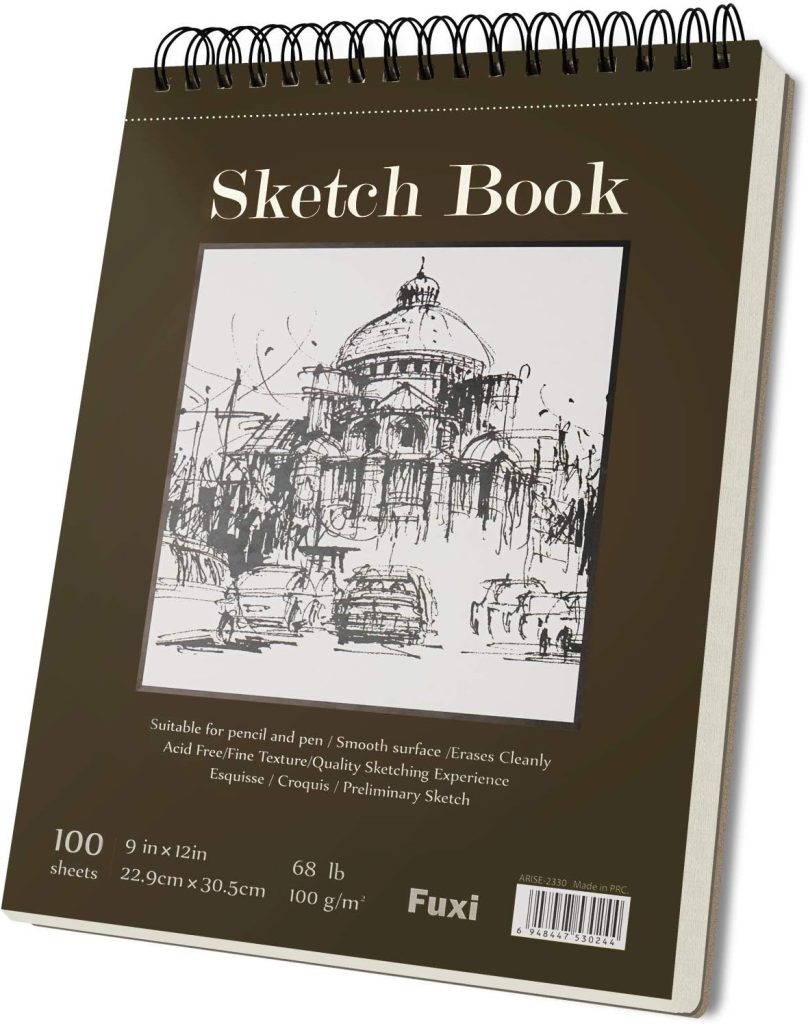
Choosing the Right Sketchbook
A sketchbook designed for drawing is crucial for the sketching experience and will show in the quality of your sketches. Consider these important factors in choosing a sketchbook:
Paper Weight and Texture: The weight of the paper, measured in pounds, determines its thickness and durability. Heavier paper is less likely to buckle or tear, especially when using wet media like markers or watercolors. The texture of the paper, whether smooth or textured, can influence the appearance of your lines and shading.
Binding Style: Sketchbooks come in various binding styles, each with its own advantages. Spiral-bound sketchbooks are flexible and easy to open flat, making them ideal for working on large spreads. Hardcover sketchbooks offer superior protection for your artwork, while softcover sketchbooks are more portable. I prefer books without a wired bind because I don’t want to have to cut off the side with the binding holes in the paper.
With these essential supplies in hand, bravely embark upon the artistic path of sketching. Remember, the most important tool is your imagination. So, grab your pencil and let your creativity flow!
Basic Sketching Tools
Pencil for sketch drawing: A good set of pencils is a must-have for any aspiring artist. Pencils come in various grades, each offering different levels of hardness and darkness. For sketch ideas for beginners, a set of three pencils—an HB, a 2B, and a 4B—is a great place to start. The HB pencil is a versatile option for general sketching, while the 2B and 4B pencils are ideal for shading and creating darker tones.
Fundamental Techniques: Building Your Skills
With your supplies at hand, it’s time to start building your fundamental sketch technique skills. These techniques will set the foundation of your artistic journey. Moreover, this pencil sketch drawing tutorial is your path to create expressive and attractive sketches.
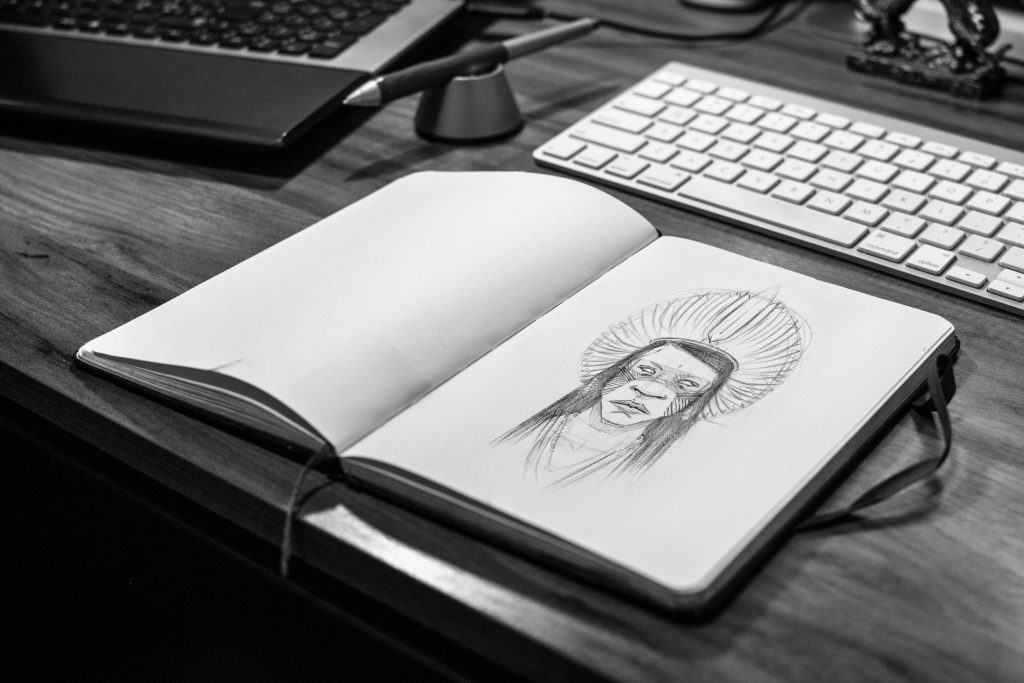
Basic Strokes and Lines
The building blocks of any drawing are the lines you create upon a surface. Using varied pressure, angle, and length of your strokes, a wide range of effects are possible. Here are a few basic stroke and line techniques to get you started:
Hatching, Cross-hatching, and Stippling: These techniques involve creating tonal values using lines. Hatching involves drawing parallel lines, while cross-hatching adds a layer of perpendicular lines. Stippling, on the other hand, involves creating patterns of dots to build up tone. Take a look at one of my pen-and-ink drawings pictured above for an example of cross-hatching.
Contour Lines and Gesture Drawing: Contour lines define the edges and shapes of objects, while gesture drawing focuses on capturing the movement and energy of a subject. By practicing these techniques, you can develop a strong sense of line quality and form. These techniques are commonly used when drawing a live model.
Shading and Blending Techniques
Shading is the art of creating the illusion of form in art using light and shadow to introduce depth and dimension to your sketches. Here are a few techniques to help you approach shading:
Creating Depth and Dimension: By varying the pressure of your pencil and the density of your shading, you can create the illusion of depth and form. Darker values create shadows, while lighter values create highlights, midtones etc.
Smoothing Lines with Blending Stumps: Blending stumps are cylindrical tools used to soften and blend your pencil lines, creating smooth transitions between tones. This’ll help create the illusion of depth in your drawings.

Perspective Drawing Basics
To be brief, perspective is the art of creating the illusion of three-dimensional space on a two-dimensional surface. It differs from shading based on the fact that you are creating depth by the placement of objects in space. In comparison to shading, perspective does not involve the manipulation of light. By understanding the principles of perspective, you can add depth and realism to your sketches. Here are the three basic types of perspective:
One-Point Perspective: This type of perspective is used to create the illusion of depth in a scene with a single vanishing point on the horizon line.
Two-Point Perspective: This technique involves two vanishing points on the horizon line, allowing you to depict objects from multiple angles.
Three-Point Perspective: This advanced technique uses three vanishing points to create a dramatic, bird’s-eye view or worm’s-eye view.
The best way to think of perspective: looking down a long highway or tunnel from your vantage point. Remember, practice is key, so keep sketching regularly and experiment with different angles and distances.
Inspiring Sketching Ideas: Unleash Your Creativity
Now that you’re acquainted with the fundamentals, it’s time to explore various things to draw in a sketchbook. Here are a few ideas to get you started:
Capturing Everyday Objects in a New Light: Transform ordinary objects into extraordinary subjects by observing the interplay and manipulating the light and shadow.
Practicing Light and Shadow Techniques: Experiment with different shading techniques to create depth and dimension in your still life sketches. Also, experiment with the lighting and pose of your still life subject.
Landscape Sketching
Landscape sketching is a great way to connect with nature and capture the beauty of the world around you. Whether you’re sketching a bustling cityscape or a serene natural landscape, there are endless opportunities for creativity.
Sketching Outdoor Scenes: Take your sketchbook outdoors and capture the beauty of your surroundings.
Experimenting with Different Perspectives and Compositions: Try different angles and viewpoints to create unique and dynamic landscape sketches.
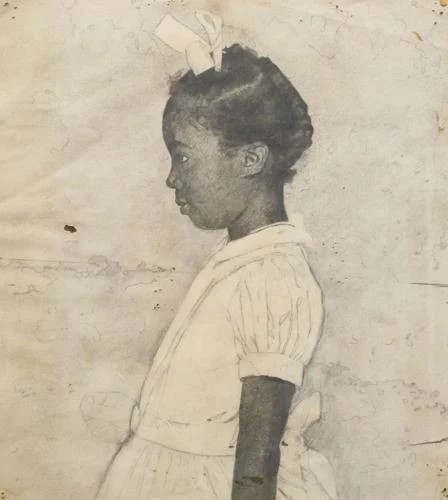
Sketch/study for “The Problem We All Live With, 1963,” by Norman Rockwell
Figure Drawing
Figure drawing is a challenging but rewarding discipline that can help you understand the human form. Whether you want to learn how to sketch a face or create full body drawings, studying the proportions, anatomy, and movement of the human body will help you create expressive and lifelike figure drawings. Drawing the figure was the foundational requirement of my study each year in art college.
Sketching the Human Form: Practice drawing the human figure from a variety of poses and angles. This practice refined my drawing skills while studying Illustration and Cartooning at SVA.
Understanding Anatomy and Proportion: Study of the muscular and skeletal systems of the human body is the gateway to create realistic figure drawings.
Character Design
Character design is a fun and creative way to let your imagination flow beyond just creating lines. By sketching unique characters with distinct personalities and backstories, you can create compelling narratives and visual worlds.
Creating Unique Characters with Personality and Style: Design characters with distinctive features, clothing, and accessories. Many movie studios have sketch artists on staff who use drawings to bring famous characters to life.
Designing Costumes, Expressions, and Backstories: Develop detailed backstories for your characters to give them depth and dimension. Sort of like what a storyboard artist would do for a movie.
Portrait Drawing
Portrait drawing is a challenging but rewarding discipline that requires careful observation and attention to detail. By capturing the likeness and personality of a subject, you can create beautiful and expressive portraits. I consider myself a portrait artist in addition to an illustrator.
Capturing the Likeness and Personality of a Subject: Begin by sketching the larger shapes then the smaller ones which all interlock to form the head. From there, refine the subject’s facial features, expressions, and hairstyle.
Practicing Facial Features, Expressions, and Hairstyles: Experiment with different line techniques to express a variety of facial expressions and hairstyles.
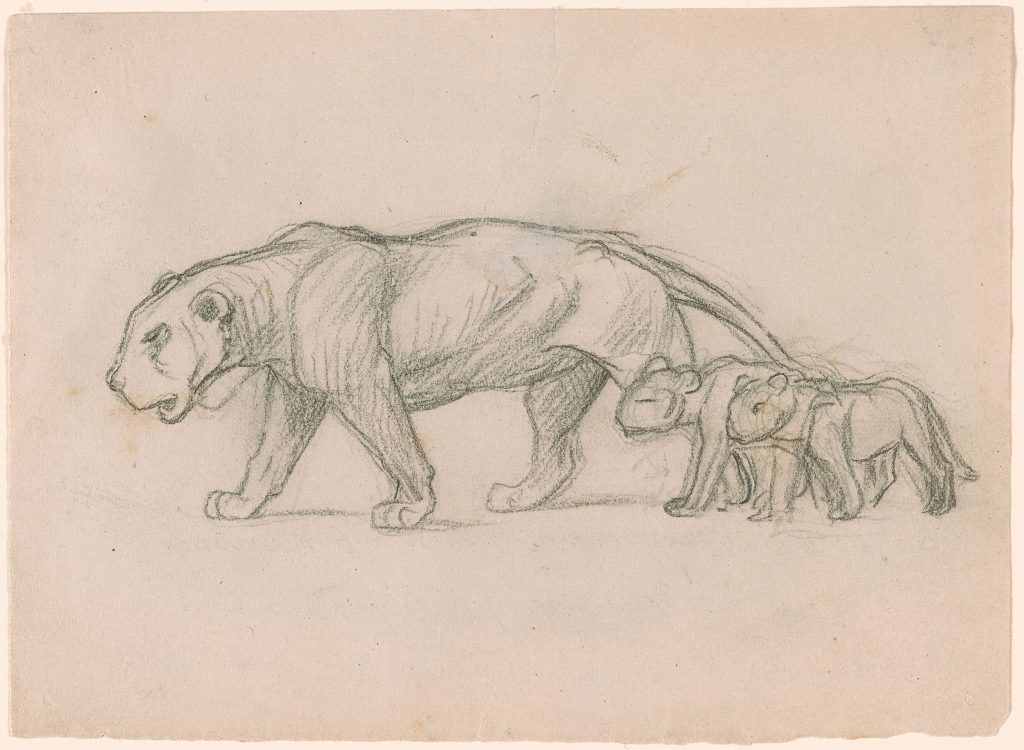
“Lioness and her Cubs” sketch by Jean Léon Gérôme
Animal Drawing
Animal drawing is a great way to practice your observational skills and learn about animal anatomy. Whether you want to learn how to sketch a pitbull or other animals, studying the proportions, movement, and unique characteristics of different animals will help you create realistic and expressive animal drawings.
Capturing the Essence of Different Animals: Pay attention to the animal’s unique features, character and texture. As you explore more sketch ideas for beginners, you’ll find that wildlife offers a wonderful variety of shapes, sizes and identities to draw from.
Understanding Animal Anatomy and Proportions: Again, it all comes down to your ability to observe your subjects as a combination of simple shapes. For beginners sketching with pencil, become acquainted with the basic anatomy of your chosen animal. As a result, you’ll create accurate and believable drawings.
Practicing Different Animal Poses and Expressions: If you don’t have the animal of your choice at home, use photo reference found online or at the library. When looking for a thing to draw in a sketchbook, this is a more practical way to get the pose and expression you need.
Remember, the key to improving your sketch technique is consistent practice. Don’t be afraid to experiment with different techniques and styles. Most importantly, have fun and enjoy the process!
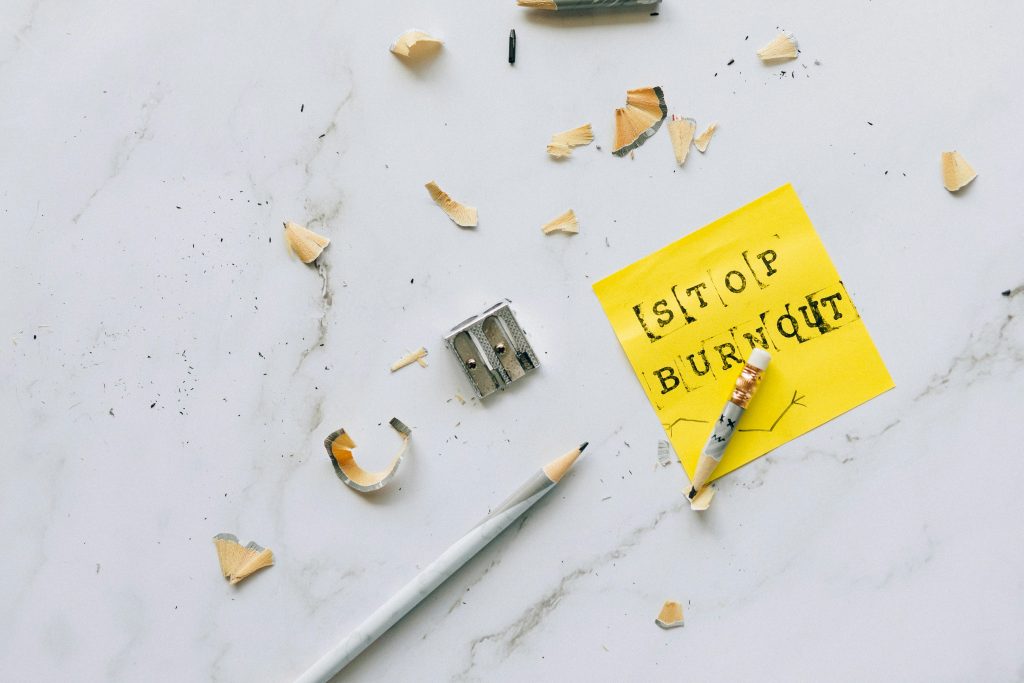
Overcoming Creative Blocks: Tips and Tricks
Truthfully, even the most talented artists experience creative blocks from time to time. Being stuck looking for ideas on what to sketch is something I can relate to! Here are a few tips to help you overcome those creative hurdles and keep your artistic momentum going:
Setting Realistic Goals
Setting achievable goals can help you stay motivated and focused. Break down larger projects into smaller, more manageable steps in the process of learning how to sketch easy things to draw. This will make the task less daunting and help you avoid feeling overwhelmed. Celebrate each small victory, no matter how minor it may seem. This is one of my methods to keep going in the face of the inevitable ups and downs of life.
Finding Inspiration
Inspiration can strike at any time, so it’s important to keep your eyes and ears open. Whether learning how to sketch a face or exploring sketching in charcoal, explore art books, visit museums, and browse online galleries to discover new ideas and techniques. Keeping a sketchbook is a great way to capture your thoughts, ideas, and inspirations.
Practicing Regularly
Following a good pencil sketch drawing tutorial and maintaining consistent practice is key to improving your skills and overcoming creative blocks. Set aside time each day to sketch, even if it’s just for a few minutes. Joining art communities and challenges can also help you stay motivated and inspired. By connecting with other artists, you can share ideas, get feedback, and learn from each other.
Remember, the creative process is a journey, not a destination. Embrace the challenges and setbacks as opportunities for growth and learning. By following these tips and tricks, you can overcome creative blocks and unleash your full artistic potential.
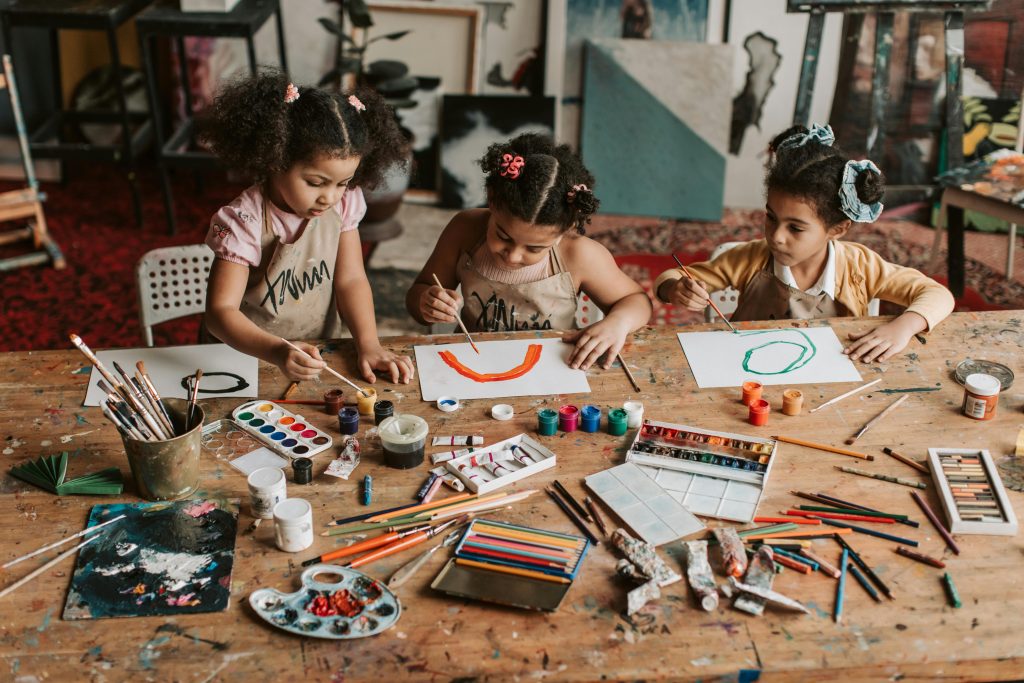
Sharing Your Art: Building a Creative Community
Sharing your art with the world can be a rewarding experience. By connecting with other artists and building a creative community, you can gain valuable feedback, inspiration, and support. Without an audience who cheers on your work, you are surely on a downward path as an artist.
Social Media Platforms
Social media platforms are a great way to showcase your work and connect with a wider audience. Consider using platforms like Instagram, Twitter, Pinterest, and TikTok to share your sketches and behind-the-scenes glimpses of your creative process. By using relevant hashtags, you can increase the visibility of your posts and reach potential followers who share your interests.
Art Communities and Forums
Joining online art communities and forums is a fantastic way to connect with like-minded artists and receive constructive feedback. Furthermore, participating in art challenges and contests can help you push your creative boundaries and learn from other artists. By sharing your work and offering support to others, you can build strong relationships and foster a sense of belonging within the art community.
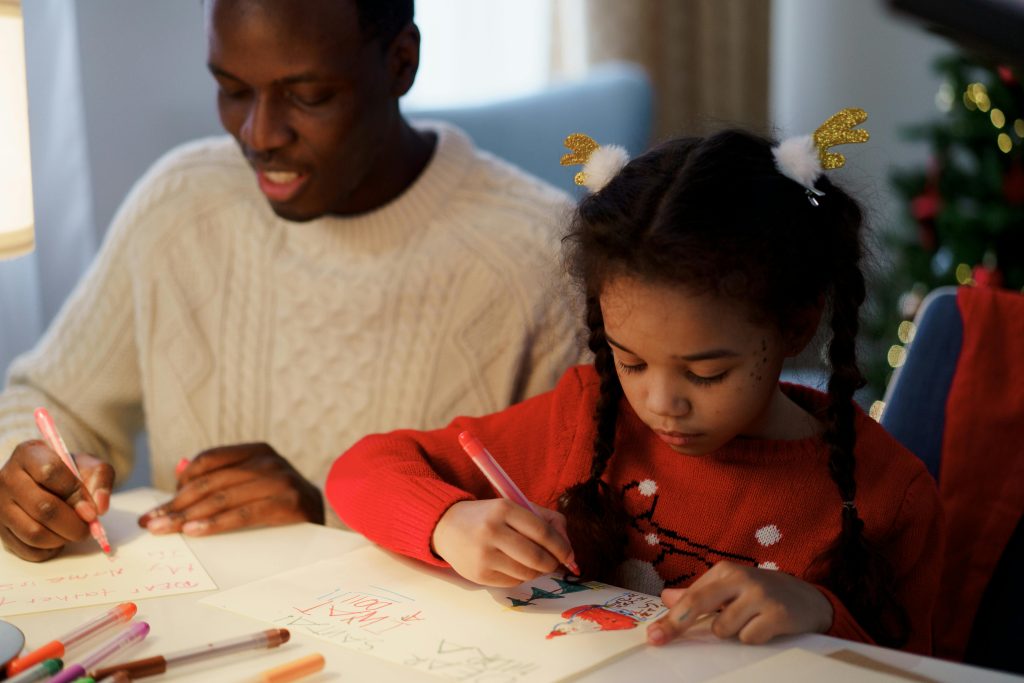
Conclusion: The Joy of Sketching
Best believe, the practice of sketching is more than just a hobby. In fact, it’s a powerful tool that can enhance your life in countless ways. These sketch ideas for beginners truly offer a multitude of benefits, including improved mental health and well-being, enhanced creativity and problem-solving skills, and freedom of self-expression.
The Benefits of a Daily Sketching Practice
Improved Mental Health and Well-being: Sketching can be a meditative practice that helps to reduce stress, anxiety, and depression.
Enhanced Creativity and Problem-Solving Skills: By regularly engaging in creative activities like sketching, you can stimulate your imagination and develop innovative solutions to challenges.
A Lifelong Hobby and Potential Career Path: Sketching can be a fulfilling hobby that you can enjoy for a lifetime. To art enthusiasts, sketching can lead to exciting career opportunities in fields. These career opportunities include illustration, graphic design, and animation.
Encouraging Continuous Learning
To continue growing as an artist, it’s important to embrace a lifelong learning mindset. Take online courses and workshops to learn new techniques and expand your skill set. Experiment with different styles and approaches to discover your unique artistic voice.
The Power of Sharing Your Art
Sharing your art with others can be incredibly rewarding. By inspiring others and building connections with fellow artists, you can create a supportive and inspiring community. Don’t be afraid to seek feedback and critique on your work. Constructive criticism can help you identify areas for improvement and grow as an artist.
Don’t fear, embolden yourself as you grab your pencil for sketch drawing and start sketching! Let your creativity flow and discover the joy of artistic expression.
